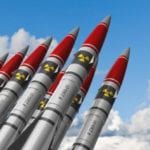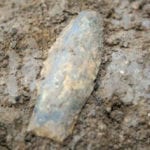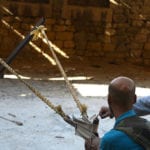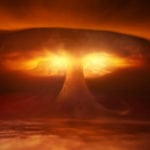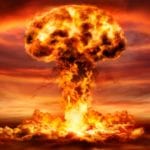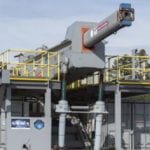 Movies and TV
Movies and TV  Movies and TV
Movies and TV  History
History 10 Things You Never Knew About Presidential First Ladies
 Movies and TV
Movies and TV 10 Zombie Movies That Will Actually Terrify You
 Humans
Humans 10 Times Scientists Were Absolutely Sure… and Absolutely Wrong
 Our World
Our World 10 Pivotal Moments for Life on Earth
 Movies and TV
Movies and TV 10 Most Realistic Medical TV Shows of All Time
 Creepy
Creepy 10 Eerie & Mysterious Ghosts of the Pacific Coast
 Weird Stuff
Weird Stuff 10 Typos That Accidentally Changed History
 History
History 10 Times Trickery Won Battles
 Technology
Technology 10 Awesome Upgrades to Common Household Items
 Movies and TV
Movies and TV 10 Movie Flops That Found Their Way to Cult Classic Status
 History
History 10 Things You Never Knew About Presidential First Ladies
 Movies and TV
Movies and TV 10 Zombie Movies That Will Actually Terrify You
Who's Behind Listverse?

Jamie Frater
Head Editor
Jamie founded Listverse due to an insatiable desire to share fascinating, obscure, and bizarre facts. He has been a guest speaker on numerous national radio and television stations and is a five time published author.
More About Us Humans
Humans 10 Times Scientists Were Absolutely Sure… and Absolutely Wrong
 Our World
Our World 10 Pivotal Moments for Life on Earth
 Movies and TV
Movies and TV 10 Most Realistic Medical TV Shows of All Time
 Creepy
Creepy 10 Eerie & Mysterious Ghosts of the Pacific Coast
 Weird Stuff
Weird Stuff 10 Typos That Accidentally Changed History
 History
History 10 Times Trickery Won Battles
 Technology
Technology 10 Awesome Upgrades to Common Household Items
Top 10 Disturbingly Practical Nuclear Weapons
In all of human history, the most devastating weapon has been the nuclear bomb. With just one piece of ordnance, a military can (and has) wiped out entire cities. Still, the engineers who make weapons weren’t done with those early models.
In the years since the bombs fell on Hiroshima and Nagasaki, scientists and engineers have continued to improve their designs. The results are both fascinating and horrifying. These 10 nukes were designed, created, or both by various militaries, and with any luck, they’ll never see the light of day.
Top 10 Near Misses With Nuclear Weapons
10 W54
Man-Portable Rocket-Launched Nuclear Weapon
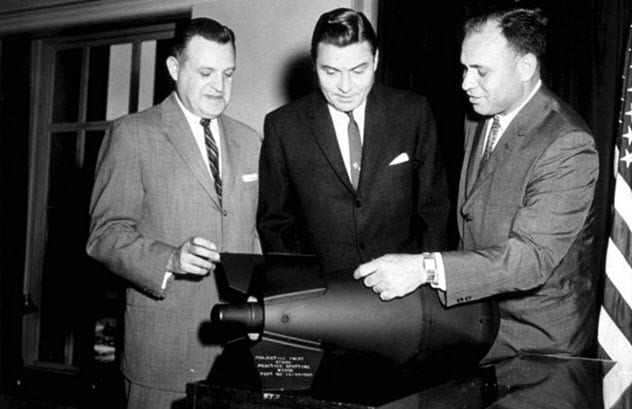
When nuclear weapons were invented, they were large, bulky objects with relatively low yields. Over time, the size of these weapon systems got much smaller while the nuclear yields grew larger. As far as we know, the smallest nuke developed and deployed by any military is the W54.
The United States developed the bomb in the 1950s as a tactical, low-yield nuclear weapon capable of delivering a 10-ton to 1-kiloton blast. It was created for use in the M-28 and M-29 Davy Crockett short-range rockets and had a range of 2–4 kilometers (1–2.5 mi).
The W54 was adapted into a man-portable Special Atomic Demolition Munition. Specifically, it was to be used if the Soviet Union invaded Europe. It was designed to be carried and fired short distances as an artillery munition.[1]
W54s were enhanced to become nuclear-tipped, air-to-air missiles. The W72 model was a rebuilt W54 used with the AGM-62 Walleye-guided bomb, which was capable of delivering a 600-ton nuclear yield. However, no models are believed to have been completed.
The W54 was extensively tested before the Nuclear Test Ban Treaty in 1963. Between 1957 and 1979, the US produced around 400 W54 bombs.
9 Mark-18
Ivy King
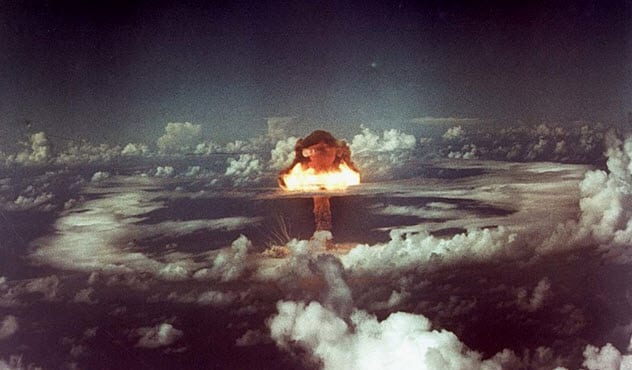
Some people feel that nuclear bombs should be precise, low-yield weapons, while others favor more of a “go big or go home” attitude. The Mark-18 Ivy King satisfies the latter as it was the largest pure-fission nuclear bomb tested by the US.
In direct response to the Soviet Union’s development of high-yield nukes in the 1950s, the Truman administration launched Operation Ivy, which resulted in the aptly named Ivy King. On November 16, 1952, the bomb was tested, and it achieved a yield of a 500-kiloton blast.[2]
The massive bomb weighed 3,900 kilograms (8,600 lb). It used a 92-point implosion system and contained an enormous amount of highly enriched uranium (equivalent to four critical masses). This put the bomb on the edge of criticality safety, so aluminum and boron chains filled the central chamber to prohibit accidental collapse.
The chains absorbed neutrons, which were needed to achieve the desired reaction. To arm the bomb, the chain was removed. Overall, the US produced 90 Mark 18 bombs from March 1953 to 1956.
8 W82
Nuclear Artillery Shell
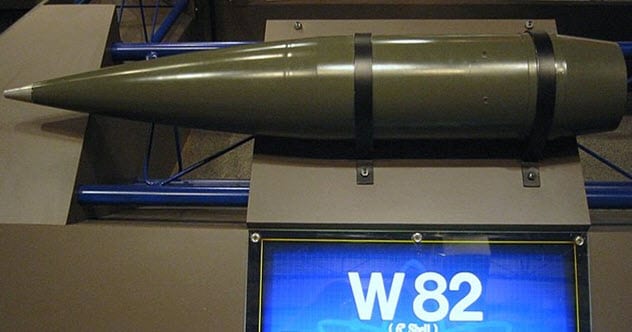
There are two types of deployments concerning the use of nuclear weapons: tactical and strategic. The bombs dropped in Japan were strategic. Their purpose wasn’t to destroy two Japanese cities. Rather, it was a display of force meant to compel a Japanese surrender.
Tactical nuclear weapons were meant to be used in specific combat operations alongside conventional weapons. The best example is the W82, a low-yield tactical nuclear warhead designed to be used in a 155 mm artillery weapon system.
The W82 was a dual-purpose weapon with a blast yield that reached two kilotons. It came with interchangeable components that would enable the shell to function as either an “enhanced radiation” or a “standard” fission device.
Like many nuclear weapons developed by the United States, the W82 was meant to provide a “cohesive forward defense” of NATO territory if the Soviet Union invaded. The ordnance could be fired to a range of 30 kilometers (18.6 mi) via an additional rocket assist.[3]
The United States planned to produce 2,500 rounds of W82 ordnance. But the government only developed around 1,000 before the program was canceled in 1991 after the Cold War ended.
7 W44
Nuclear Depth Charge
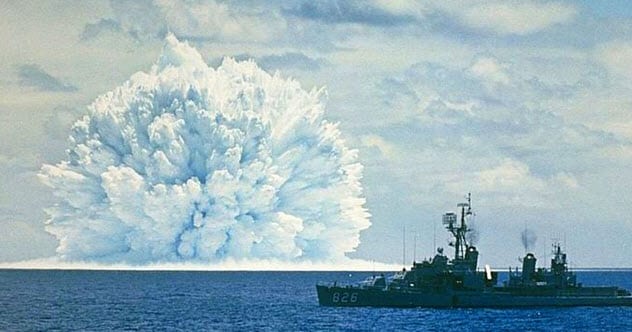
Submarines have proven to be one of the most effective naval vessels in combat as they represent a clear and present danger to surface vessels during warfare. To counter this, navies across the world have developed torpedoes and depth charges designed to find and destroy submarines.
As the United States had to put a nuke on every type of ordnance during the Cold War, one was developed for use in the RUR-5 ASROC (Anti-Submarine ROCket) in 1961. The system fired a Mark 44/46 torpedo fitted with a W44 nuclear warhead.
These torpedoes were only launched by surface ships, and they carried a great deal of explosive energy. The W44 achieved a yield of 10 kilotons, making it particularly deadly if it was fired and detonated anywhere near a submarine.[4]
The ASROC would fire on a sub’s position with a rocket carrying an acoustic homing torpedo to deploy the system. After entering the water, the depth charge detached from the torpedo and sank quickly to a predetermined depth. There, it detonated.
Placed into service in 1961, the W44 was only tested one or two times, although 575 were produced. The Nuclear Test Ban Treaty in 1963 put an end to underwater nuclear testing.
6 B61 Mod 11/12
Nuclear Bunker Buster
For the most part, keeping yourself safe from a nuclear weapon requires staying deep underground. This protects you from the blast and ensuing radiation, but that presents a problem for the people trying to take out the target. To mitigate bunkers, the United States developed the Mod 11 for the B61 thermonuclear gravity bomb.
The device works by combining ground shock with earth penetration of around 3 meters (10 ft). This combination works to force the bulk of the explosive energy further into the Earth, resulting in the target’s destruction.[5]
Bunker buster bombs carrying the B61 Mod 11 can carry one of three nuclear yields: 0.3, 340, or 400 kilotons. Beginning in 2019, the US started developing the GPS-guided Mod 12, which will produce yields of 0.3, 1.5, 10, or 50 kilotons. It is believed that the weapon was designed to penetrate up to 304 meters (1,000 ft) of solid granite to counter the continuity of government facility at Kosvinsky Kamen in Russia.
10 Sobering Facts About The US Nuclear Arsenal
5 MK-54 Special Atomic Demolition Munition

While the W54 was designed to be launched via rocket, the MK-54 Special Atomic Demolition Munition (SADM) was meant to be carried by personnel into combat. The SADM was intended to be used to counter a Soviet invasion of Europe.
The device was relatively lightweight at 23 kilograms (51 lb) and able to fit inside a duffel bag. The warhead carried a yield of between 10 tons and one kiloton. It was equipped with a time delay, so troops could place the weapon and escape the target location before detonation.
Three hundred MK-54s were developed, and airborne troops were trained in their use. Ideally, paratroopers would jump from an aircraft over enemy or occupied territory. They would head to a predetermined target, which would be a power plant, bridge, or another resource. Then they would remove it from the battlefield.
The bomb is enveloped in controversy . . . more than other nuclear weapon. This is due to allegations that any mission carried out by a paratrooper was a suicide mission. It wasn’t practical to outrun the timer or the blast radius. According to Mark Bentley, a soldier trained in the deployment of atomic bombs, “We all knew it was a one-way mission, a suicide mission.”[6]
4 RA-115
Suitcase Nuke
The United States’ development of the MK-54 wasn’t something that the Soviet Union was willing to let slide, so the USSR created its own so-called “suitcase nuke.” The RA-115 weighed 22–27 kilograms (50–60 lb). They were designed to be placed for long periods at a target location for eventual detonation.
The bombs were connected to a small power source with a battery backup, which would signal a potential loss of power to a GRU post at a Russian embassy or consulate office. Numerous RA-115s were placed at strategic locations around the world.
Much of what is known about the RA-115 weapon system has been provided to the West by Stanislav Lunev, the GRU’s highest-ranking defector. According to him and the former Russian National Security Adviser Aleksandr Lebed, the USSR created 250 of these weapon systems and more than 100 are missing.[7]
That’s a frightening proposition as the weapons were designed to be placed inside the United States to eliminate targets and politicians if the Cold War turned hot. The Russian Security Council has investigated these claims and suggested that they are misleading. But with so much secrecy, there’s no way to know for certain.
3 Blue Peacock
Nuclear Land Mine
The United Kingdom developed a nuclear land mine to support a NATO defense if the Soviet Union crossed north Germany in a European invasion. The project was known as Brown Bunny before the name was switched to Blue Bunny and finally became Blue Peacock.
The mines were designed to produce a yield of 10 kilotons. They would either be detonated via an eight-day timer or by wire manually. According to a policy paper, the thinking was that “a skillfully sited atomic mine would not only destroy facilities and installations over a large area but would deny occupation of the area to an enemy for an appreciable time due to contamination.”[8]
The Blue Peacock program went through development but was never deployed. There was too much risk of fallout and the contamination of territory that NATO nations wanted back.
Interestingly, the system had a problem in keeping the electronics from freezing. One suggestion was to seal live chickens with food and water inside the casing. The chickens’ body heat would theoretically keep the weapon system from freezing.
The proposal was so outlandish that many thought it was an April Fools’ joke when the project was declassified in 2004. It wasn’t.
2 9M730 Burevestnik
Nuclear-Powered, Nuclear-Armed Cruise Missile

Russian President Vladimir Putin unveiled six new Russian strategic weapons in March 2018, with the 9M730 Burevestnik being the most extraordinary. It’s a nuclear-tipped cruise missile that’s also nuclear-powered.
The intercontinental cruise missile was in development shortly after the United States deployed the THAAD (Terminal High Altitude Area Defense) system, which was intended to counter nuclear ICBMs. The 9M730 Burevestnik was designed to counter the THAAD.
According to Russian claims about the weapon, it has an unlimited range and “is invincible to all the existing and advanced air and missile defense systems.” Theoretically, the THAAD can’t stop them.
As the weapon is relatively new, no declassified or confirmed information exists about its potential yield. It is believed that the development of the system caused the Nyonoksa radiation accident in August 2019. This resulted in the deaths of five weapons scientists following a test of an “isotope power source for a liquid-fueled rocket engine.”[9]
Aleksei Karpov, the Russian envoy to international organizations in Vienna, stated that the accident was related to “one of the tit-for-tat measures in the wake of the United States’ withdrawal from the Anti-Ballistic Missile Treaty.”
1 RDS-220
Tsar Bomba
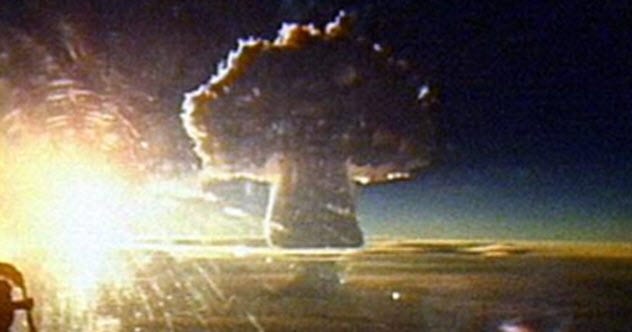
The RDS-220 Tsar Bomba is probably the best-known nuclear weapon. Tested in October 1961, it was the largest man-made explosive ever detonated.
The device was developed as more of a proof of concept than a usable weapon system. It was 8 meters (26 ft) long and weighed a massive 27,000 kilograms (60,000 lb). Only one was ever built and tested.
There are various claims about the atomic yield, which might have reached 100 megatons if a uranium-238 fusion tamper had been included. Instead, the RDS-220 Tsar Bomba is estimated to have achieved a yield of 50 megatons, as measured by Soviet scientists at the time. That was more than 3,300 times the size of the Hiroshima blast.[10]
The aircraft used to deploy it was stripped down to support the massive ordnance. The craft’s outer hull was covered in a special white reflective paint, and the crew was given only a 50 percent chance of survival. Despite this, they dropped the bomb, which unleashed a mushroom cloud that reached 67 kilometers (42 mi) high.
10 Times The Military Mistakenly Dropped Nuclear Bombs
About The Author: Jonathan is a graphic artist, illustrator, and writer. He is a Retired Soldier and enjoys researching and writing about history, science, theology, and many other subjects.
